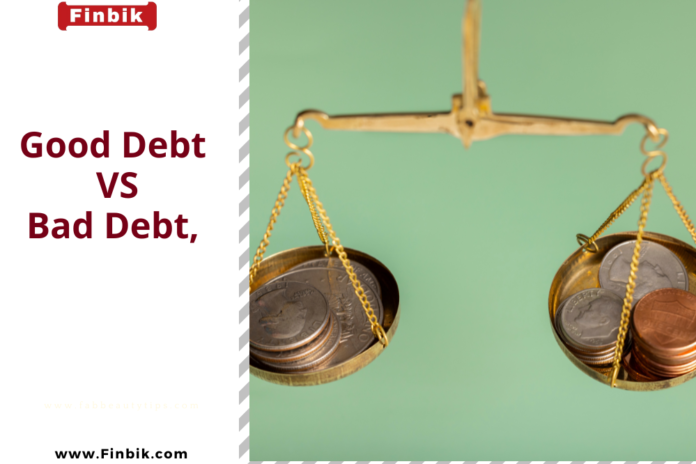Indebtedness is what defines today’s financial realm. Indebtedness assists in achieving our economic ambitions. But there are these different types of debts still some are basically ‘good’ while others are only ‘bad’. This paper delves into a discussion on this aspect of debt showing how it may help us become better off or lead us into trouble. In other words, we will explain the significance of understanding the variance between good and bad debt and give a detailed view of what constitutes good and bad debt.

Good Debt vs. Bad Debt
Good debt helps people accomplish their long-term financial objectives. It positively influences and helps raise your credit score. In the first place, favorable debts are signified by having low interests plus flexible terms in repayment. Mortgages and student loans as an illustration fall under this category of debts. Furthermore, good borrowing aids in building a reputation as well as improving one’s life financially. Furthermore, decent debt does yield tax privileges along with cutting down fiscal strains.
However, the presence of bad finances is utterly destabilizing. The said situation subjects you into excess payment as well as contributing significantly to other large issues. Truly speaking, too much credit guarantees sleepless nights in most cases thus causing constant stress. Debts believe that holds all our actions into captive that we never get rid of thus complicating our energetic state.
Types of Good Debt
Moreover, some good debts includes:
1. Secured debts
Firstly, it is used for purchasing used cars if you find out that the amount of cash at hand can’t pay off all the amount in the collection. Also, it refers to a variety of financiers which can include, home mortgage loans typically used by first-home buyers or auto financing.
2. Unsecured debt
Secondly, this kind of debt isn’t backed up by collateral yet comes with set interest rates as well as repayment schedules such as those for education credits and cash advances.
3. Revolving debt
Thirdly, this allows an individual to borrow or repay money based on need. For example, revolving debts include credit cards or an open line of credit.
4. Mortgage debts
Above all, you can use them as financing tools in acquiring real properties. It includes tax advantages at certain points in time which could result in permanent financial security.
5. student loan
You can borrow money/loan for college. Furthermore, you can pay it back over time after leaving school or obtaining a degree.
6. Business loans
They come in handy when one needs money to put up a new company which will in turn make them financially stable with time.
7. Home improvement loan
You can use it to finance projects in the house. Also, it can also raise its real worth.
8. Solar loans
This sort of debt can result in long-term financial benefits. Moreover, solar panels are financed through it.
9. Farm loans
Farm loans are used for funding agricultural projects, and they offer prospects for long-term financial security and growth.
Types of Bad Debt
Furthermore, some bad debts includes
1. High-interest debt
Firstly, it comes with a steep interest rate, making it hard to pay. And secondly, this includes credit card debts and payday loans.
2. Predatory debt
They have concealed charges and very high rates that make paying down the principal difficult, for example, payday advances or vehicle title loans may serve this purpose.
3. Debt with inflexible repayment term
Any loan which can’t be flexible during its repayment is not advisable for you because in case you ever fall short then the chances are high that there would be nothing you could do about it due to how strict these rules are.
4. Credit card debt
Also, these debts can cause financial troubles and tension if not properly managed.
5. Debts for luxury goods
You can utilize this debt in the financing of luxury items. However, they can cause troubles in the budget hence causing tension.
6. Title loans
Moreover, these use vehicles as collateral, leading to financial struggles and stress.
7. Cash advance loans:
Also, labeled as advance get high charges and interest rates taking the borrower extra effort to clear the debts.
Conclusion
In conclusion, it is vital to distinguish between bad and good debt for wise financial decisions. Furthermore, you can achieve your future financial aims through it. Also, bad debts can lead to bankruptcy and chronic depression. One should always know the kind of debt they are getting into and handle it responsibly with this in mind. First and foremost, the objective of this article is to give a fictitious grasp of debts and their consequences; while assisting people in sound decisions concerning their money matters. Knowing what good debts and bad debts entail helps someone to choose wisely regarding their finances, hence becoming financially stable in the long run.
Articles You May Like
What is the difference between Inflation and Deflation
The Objectives of Communication
Courses After 12th Commerce Eligibility And Colleges In India

